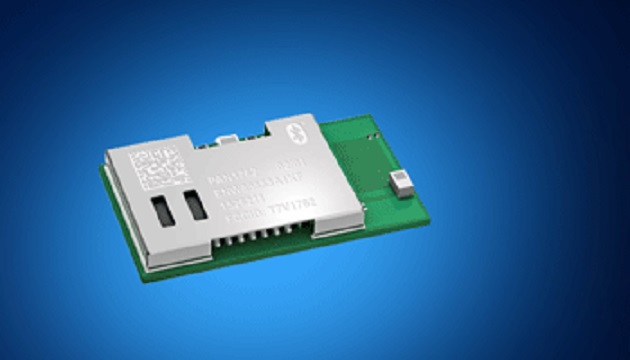Mouser Electronics, Inc., the authorized global distributor with the newest semiconductors and electronic components, is now stocking the PAN1762 Series RF module from Panasonic. The ultra-low-power Bluetooth Low Energy 5.0 module enables the transmission of large amounts of data in connectionless environments, providing a compact solution for Internet of Things (IoT), beacon, and mesh network applications.
The Panasonic PAN1762 module, available from Mouser Electronics, is based on the Toshiba TC35680 single-chip controller, which provides an Arm Cortex-M0 processor core with Serial Wire Debug (SWD) interface and 128 Kbytes of flash memory. The module integrates standard Bluetooth Low Energy profiles in addition to Serial Port Profile (SPP), and offers three types of operation: host mode, AT command mode (coming soon), and a stand-alone mode that eliminates the need for an external processor.
The PAN1762 module’s Bluetooth 5.0 features enable a high symbol rate of 2 Mbits per second (Mbps) using the high-speed 2M PHY or a significantly longer range using the Low Energy-coded PHY at 500 Kbits per second (Kbps) or 125 Kbps. A high output power of up to 8 dBm and the industry-leading sensitivity of the TC35680 (-105 dBm at 125 Kbps) in combination with the Low Energy coded PHY make the module very attractive in applications where a long range is required.
The module offers 18 general-purpose inputs/outputs (GPIOs), shared by two I²C, SPI, and UART interfaces; four PWM outputs; and five analog-to-digital converters (ADCs). Housed in a compact 15.6 × 8.7 × 1.9 mm package, the device’s low current consumption provides an ideal solution for battery-powered applications. The module is also pinout compatible with the PAN1760A and PAN1026A Bluetooth modules, enabling designers to easily migrate previously developed software.
The PAN1762 module is supported by the PAN1762 Evaluation Kit. The all-inclusive kit features two USB dongles for developing, running, and debugging code, while breakout headers allow developers to connect sensors and devices for prototyping.
Click here for more information






